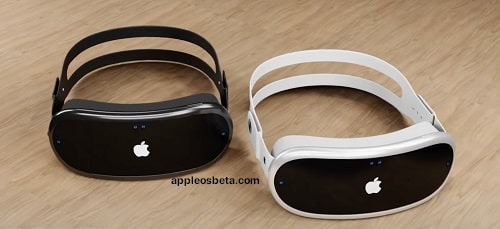10 Features of Apple VR Virtual Reality Headset. According to rumors, next year Apple plans to take another niche in the mobile electronics market. The company will launch its first Apple mixed reality headset that will support AR and VR technologies. Naturally, like any other product of the American technogiant, the new product will differ from existing analogues on the market for the better. What exactly? Now we’ll find out.
How to use Stage Manager in macOS 13 Ventura?
4K micro OLED displays
Apple will install two micro OLED displays with 4K resolution from Sony in the headset. The pixel density of these panels is said to be in the order of 3,000 pixels per inch. In comparison, the new top-of-the-line Meta Quest Pro has conventional lower resolution LCD matrices.
Matrices like micro OLED are built directly on silicon chips, and not on a glass substrate. This allows for thinner, smaller and lighter displays that are also more energy efficient than any other panel.
Over ten cameras
A mixed reality headset is a device that must process all events and turn them into a mixture of computer graphics and the real world. To do this, the system will need not only high-quality displays, but also “eyes” – cameras. In total, at least a dozen of them will be installed.
Sensors will be able to read in detail and then display the environment, surfaces, edges of objects and their dimensions, as well as people and other objects. The cameras will also be able to enlarge small print and even track the user’s movements – for this, two additional cameras will be installed in the headset that “look” at the feet.
Iris scanner
Instead of the usual systems such as Face ID or Touch ID, an iris scanner will be built into the headset. This method will be used to unlock the device and perform various actions – for example, to confirm payment. So far, no other competitor on the market has this.
Facial expression tracking
Along with an iris scanner, a system will be built into the headset that allows you to accurately track the facial expressions of the user’s face. With it, the device will be able to interpret facial expressions and superimpose it on virtual avatars. So if you smile or frown in real life, your virtual avatar will do the same in various applications, similar to how Memoji and Animoji work on iPhone and iPad.
Compact device
One of the main advantages of the Apple headset should be its compactness, and, consequently, its low weight. This will eliminate discomfort during prolonged use of the accessory. The manufacturer will use the lightest materials for assembly – mesh fabric and aluminum.
If rumors are to be believed, Apple is aiming to create a headset that will weigh around 200 grams – for example, the Quest Pro weighs 722 grams.
Advanced Management
In addition to cameras, various 3D sensors will be built into the device that recognize hand gestures. This is required to control the headset. Apple VR will also recognize touch and voice control. Another device can receive an additional accessory in the form of a ring that is worn on the finger and allows you to control what is happening in VR.
Interchangeable straps
This is Apple’s signature number – additional straps and other interchangeable accessories.
Unique Software
Standard software in the form in which it is implemented on devices such as iPhone, iPad and even Watch does not conceptually fit into the VR system. Therefore, Apple must introduce a completely new way to interact with content in its headset.
Hardware
Rumor has it that Apple is going to install two Silicon M2 processors in the headset at once. It is believed that this will be enough to process VR and AR without delay. In this case, the device will also use an auxiliary chip that controls sensors and other peripherals.
Offline work
The following follows from the previous one – two processors will allow the headset to work independently without connecting to an iPhone or laptop, as, for example, branded watches still do.
In our opinion, Apple’s transition to such technologies is absolutely justified and mandatory. After all, until now there have been no devices in the VR headset segment that have revolutionized like the iPhone. Why doesn’t Apple do something similar again in a yet unexplored format, where even the most advanced users still feel insecure.

